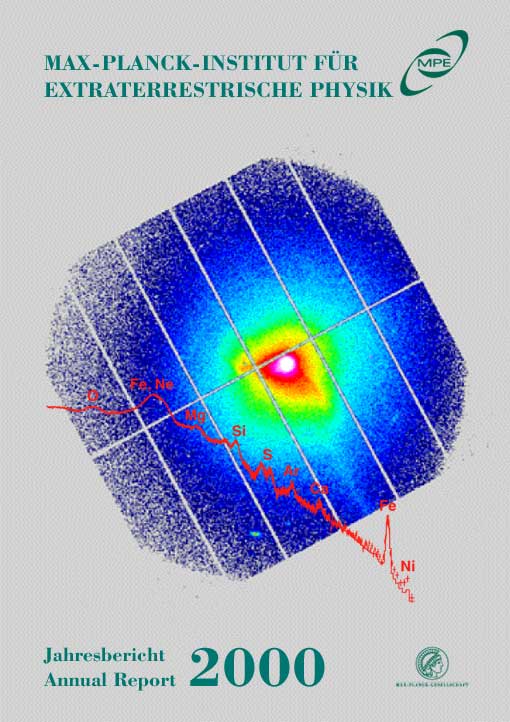
Titelbild
Galaxienhaufen enthalten mehr Materie in Form von heißem, im Röntgenlicht leuchtenden Gas, als die Gesamtmasse aller Galaxien im Haufen ausmacht. Die Abbildung zeigt ein Röntgenbild (Farbcodierung für Intensität) und -spektrum (gelbe Linie und Datenpunkte) der elliptischen Riesengalaxie, M87, im Zentrum des Virgo-Galaxienhaufens, das mit dem pn-Detektor an Bord des Röntgenobservatoriums XMM-Newton gewonnen wurde. Hier, im nahen Virgo-Haufen lässt sich das Innerhaufengas am besten analysieren. Es gibt unter anderem Aufschluss über die im Haufen eingeschlossene Masse einschließlich der Dunklen Materie. Zum ersten Mal kann mit XMM-Newton die Häufigkeit der 9 wichtigsten, schweren Elemente im Innerhaufengas gemessen werden (wie im Spektrum zu sehen). Dies liefert Informationen über die zurückliegende Sternbildungsaktivität, die für die Produktion dieser Elemente verantwortlich ist.
Cover Image
Clusters of galaxies contain more matter in form of hot, X-ray luminous plasma than what is contributed by all cluster galaxies. The figure shows an X-ray image (collocating for intensity) and spectrum (yellow data points and line) of the giant elliptcial galaxy, M87, in the center of the Virgo cluster of galaxies as obtained with the pn-detector on board of the X-ray observatory XMM-Newton. Here, in the nearby Virgo cluster the intracluster plasma can be studied in great detail. The X-ray observations provide among other information the means to determine the mass of the cluster including the contribution by "Dark Matter". With XMM-Newton we can now for the first time also determine the abundance of the 9 most important heavy elements in the intracluster plasma. This provides important information on the past star formation activity, which is responsible for the production of these elements.
MPE Jahresbericht 2000 / MPE Annual Report 2000